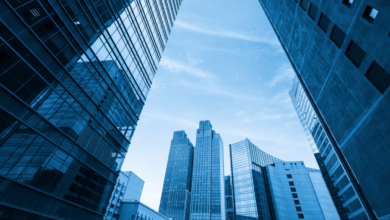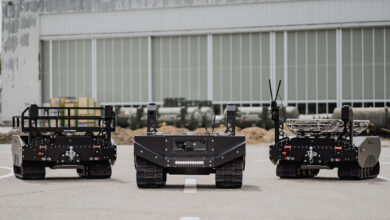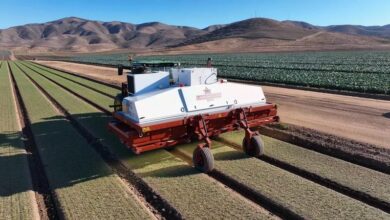Autonomy, Humanoid Robots, and Sustainability

Elon Musk’s recent address at the 2024 Annual Stockholder Meeting was nothing short of visionary. With characteristic enthusiasm and a touch of humor, Musk painted a vivid picture of Tesla’s ambitious roadmap. From groundbreaking advancements in autonomous driving and the transformative potential of humanoid robots to the relentless pursuit of sustainability and innovation in production, Tesla’s trajectory is set to redefine industries and everyday life.
In this article, we delve into the highlights of Musk’s presentation, exploring the technological breakthroughs that are propelling Tesla forward. We’ll examine how Tesla’s innovative spirit is tackling the challenges of scaling production and reducing costs, and we’ll take a closer look at the promising future of full self-driving cars and the Optimus robot. Join us as we unpack Musk’s bold predictions and the strategic initiatives that are positioning Tesla at the forefront of a sustainable and autonomous future.
Autonomy: A New Frontier
Musk reiterated Tesla’s commitment to solving the sustainable energy problem through electric vehicles (EVs), stationary storage, and solar energy. He highlighted the exponential progress in Tesla’s Full Self-Driving (FSD) technology, which he believes will soon surpass human driving capabilities. “If you plot the points on the curve of how well autonomy is progressing, it’s heading towards unsupervised full self-driving very quickly at an exponential pace,” Musk stated. He encouraged shareholders to test the latest FSD versions themselves, noting the significant improvements in miles driven without intervention.
The significance of this progress cannot be overstated. Musk explained that with each software release, Tesla’s self-driving cars are becoming safer and more reliable. “It’s very clear that we will actually go to the point where it is far safer than a person driving the car,” he emphasized. According to Musk, the autonomy features will revolutionize the transportation sector, drastically reducing accidents and making roads safer for everyone.
Furthermore, Musk discussed the broader implications of autonomous driving for the automotive industry. By transforming how cars are used and monetized, Tesla aims to create a network of self-driving vehicles that can operate efficiently and economically. “You can add or subtract your car to the fleet whenever you want,” Musk explained. “When you’re not using your car, it can make money for you while you’re gone.” This innovative model could dramatically change car ownership, making it more accessible and financially beneficial.
Musk also touched upon the readiness of Tesla’s self-driving technology for real-world application. He mentioned that many investors and industry experts still underestimate the rapid progress being made. “If you just believe the curve of autonomy’s progress, it’s headed towards unsupervised full self-driving very quickly,” he reiterated. This confidence is backed by Tesla’s continuous data collection and refinement process, which uses millions of miles of driving data to improve their AI algorithms.
Musk pointed out that Tesla’s approach to the practical rollout of autonomous features combines rigorous testing and gradual implementation. He encouraged stakeholders to monitor each software update, as the enhancements would be substantial. “With each release, you’ll see a big improvement,” he said, promising a future where Tesla vehicles will navigate complex driving scenarios with ease and precision.
The enthusiasm and ambition of Tesla shareholders in Musk’s vision for autonomous driving are palpable. As Tesla continues to take charge of this groundbreaking technology, the company is poised to reshape the future of transportation. “We are making great progress in solving the sustainable energy problem,” Musk concluded, highlighting the broader impact of Tesla’s innovations on global energy consumption and environmental sustainability.
Humanoid Robots: The Next Leap
During the meeting, Elon Musk delved into another groundbreaking venture for Tesla: developing humanoid robots, specifically the Optimus project. Musk’s vision for humanoid robots extends beyond industrial applications, envisioning a future where these robots become integral parts of daily life. “Who doesn’t want a C3PO?” he quipped, drawing laughter and applause from the audience. “I think everyone in the world is going to want one, like literally everyone.”
The Optimus robot, designed to perform various tasks, is poised to revolutionize industries and homes. Musk highlighted that Tesla’s expertise in electric motors, batteries, and AI has positioned it uniquely to succeed in this challenging field. “We’ve had to design everything from scratch—the motors, the gearboxes, the sensors, the power electronics,” he explained. “There’s basically no supply chain for the types of components needed for a humanoid robot.”
Musk projected an ambitious production scale, aiming for millions of units annually once the robots hit full-scale production. “It’s conceivable for Tesla to achieve a valuation ten times that of the most valuable company today,” he asserted, linking the future financial success of Tesla to the widespread adoption of Optimus robots. He anticipated that each household might eventually have multiple robots performing tasks from household chores to personal assistance.
The Optimus robot is undergoing significant advancements to make it a versatile and indispensable assistant. “We’re working on a major hardware revision that should be done by the end of this year or early next,” Musk revealed. “Next year, I predict we’ll have over a thousand, maybe a few thousand Optimus robots working at Tesla.” These robots are already being tested in Tesla’s Fremont factory, performing repetitive tasks and demonstrating their practical utility.
Musk’s vision includes robots that can be taught tasks through simple instructions or observing human behavior. “You’ll be able to literally talk to it and say, ‘Please do this task,’ or show it something and have it replicate that task,” he said. The integration of AI will enable these robots to learn and adapt, making them increasingly autonomous and efficient.
The potential market for humanoid robots is vast, with Musk predicting a future where the ratio of robots to humans could be greater than one-to-one. “I think there will be more than 10 billion humanoid robots in the world, probably 20 or more,” he speculated. Tesla’s Optimus project is set to lead this charge, leveraging the company’s manufacturing prowess and AI expertise to bring this ambitious vision to life.
By pioneering humanoid robotics, Tesla aims to create products that not only perform tasks but also improve quality of life. “Imagine a future where you have a humanoid robot that can do anything you need,” Musk enthused. It’s not just about the tasks it can perform, but how it can enhance our lives and provide companionship.” This leap into humanoid robotics represents another bold step for Tesla that could redefine human-machine interaction in the years to come.
Sustainability and Production
Elon Musk underscored Tesla’s unwavering commitment to sustainability and its innovative strides in production. “We’re not just making cars; we’re making a significant dent in CO2 emissions,” Musk stated. Tesla’s robust growth in renewable energy solutions, such as solar power and energy storage systems, reflects this ambition.
Tesla’s sustainability efforts extend deeply into their production processes. “Our factories are some of the most sustainable in the world,” Musk noted. “We care a lot about sustainable manufacturing. Our vehicles are water-efficient, energy-efficient, and we’re constantly working to reduce waste.” The company’s Gigafactories, designed to be highly efficient and powered by renewable energy, stand as testaments to Tesla’s commitment to an eco-friendly future. “Walking around our factories, you can see the dedication to sustainability in every aspect,” Musk added.
A significant focus of the meeting was Tesla’s advancements in battery technology. “Our batteries are lasting longer, and we’re making significant improvements in their recyclability,” Musk highlighted. This progress is crucial as Tesla ramps up the production of its electric vehicles and energy storage products. “This year, we’re on track to deploy a massive number of energy storage units,” Musk announced. “We’re seeing a two to three hundred percent year-over-year growth in energy storage deployment, which is incredible.”
Musk also spoke about the environmental benefits of Tesla’s autonomous vehicle technology. “Autonomy will have a profound impact on carbon emissions,” he said. “With self-driving cars, we’re looking at a future where vehicles are utilized more efficiently, dramatically reducing the number of cars needed and the resources required to produce them.” This shift could substantially decrease global emissions, as fewer cars on the road would mean fewer emissions overall.
In addition to vehicles, Tesla’s efforts in battery production are poised to make a significant impact. “Our 4680 battery cells, produced in-house, represent a breakthrough in cost and efficiency,” Musk explained. “We’re working towards cost parity with our suppliers by the end of the year.” These advancements are expected to lower the cost of Tesla vehicles, making them more accessible and further promoting the adoption of electric cars.
Musk’s presentation also touched on Tesla’s innovations in energy storage. “We’re deploying more Mega packs and Powerwalls than ever before,” he noted. “The Powerwall 3, in particular, is a game-changer at the personal level.” These energy storage solutions are designed to work seamlessly with Tesla’s solar products, providing customers with reliable, sustainable energy solutions.
Finally, Musk reiterated Tesla’s dedication to continuous improvement and innovation in all aspects of its business. “We aim to be the best in everything we do, from manufacturing to sustainability,” he asserted. “Our goal is to create a future where sustainability and technology go hand in hand, improving lives while protecting our planet.” As Tesla continues to push the boundaries of what is possible in both vehicle and energy production, it remains at the forefront of the transition to a sustainable future.



